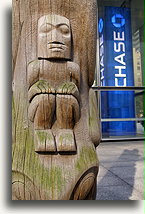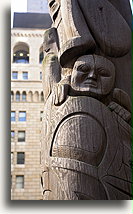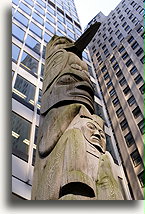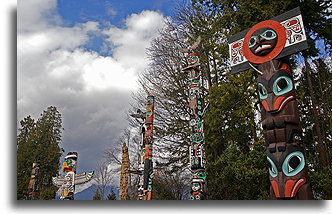
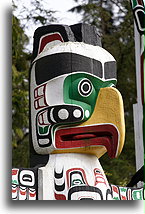
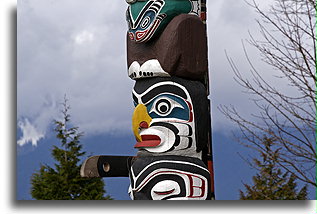
Northwest Coast people traditionally lived in numerous villages along coastline and inland rivers. Large extended families lived together in communal longhouses spread in a row along a beach. Since there were no large political units outside of individual village, the cultures are grouped today according to language.
Nuu-chah-nulth means "Arc of mountains rising out of the sea". These are 15 nations occupying 300 km/ 180 miles of coastal territory of Vancouver Island, BC, Canada. They live in traditional home villages on the coast and nearby urban centers.
Makah people live in northwest tip of the Olympic Peninsula in the USA. Their villages faced water and their livelihood has always come from the sea. They share customs and language with Nuu-chah-nulth.
Coast Salish people include more than 57 tribes who live around the Strait of Georgia, southern Vancouver Island, Canada and most of western Washington State, United States.
Kwaguilth (Kwakwakawakw) are kwakwala speaking people who live in northern Vancouver Island and mainland inlets.
Heiltsuk live in central coast of British Columbia, mostly on Campbell Island.
Nuxalk nation live at the head of Burke Channel 120 km/ 75 miles inland from Pacific Ocean.
Gitxsan literally means "People of the River of Mist". They live in northern BC along Skeena River.
Tsimshian live in central British Columbia coast and offshore islands, north to the Nass River and south to Douglas Channel.
Nisgaa live in Nass Valley in northwest British Columbia.
Tlingit still live in coastal mainland and islands of southeastern Alaska. When United States purchased Alaska Thingits protested and hired a lawyer to advance their claims of ownership of southeastern Alaska.
Haida live on Charlotte Islands in British Columbia and southern half of the Prince of Wales archipelago in Alaska.
Totem pole has become a symbol for the Northwest Coast today. Actually they were not carved all over the coast, but were most prevalent only among Tlingit, the Haida, Tsimshian and the Kwaguilth peoples. Other poles known as house posts were more common. Wooden house posts were visual reminders of familys history and status. Larger posts were erected outside to indicate the clan that owned the longhouse. Smaller posts were positioned inside house to remind children of their familys history. The tongues sticking out of the mouths of the posts mean “welcome”.
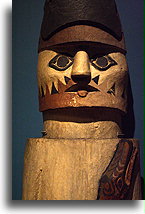
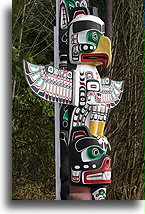
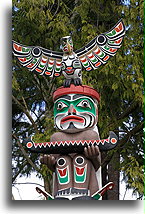
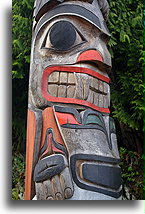
Indians of the northwestern coast of North America suffered not less than other Native Americans. Smallpox came in the 1860s. In 1884 Canadian government outlawed the ceremonial feast potlatch, native children were separated from their parents by sending them to boarding schools.
Four wind motif expresses the power and strength of the movement of air. Symbol identical to Nazi swastika was widely used on baskets. Since WW II it has disappeared from all Coast Salish Indian art.
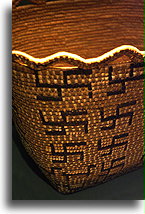
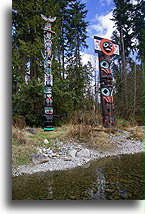
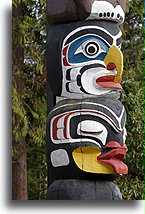
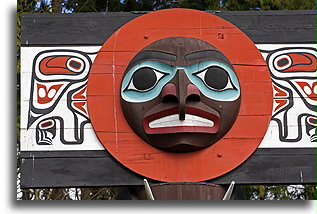
On the East Coast of the United States in New York City, one block from Wall St once stood the wooden pole made by a Native American artist from British Columbia, Canada. The totem named The Raven Puts the Sun in the Sky contained traditional Pacific Northwest motives. This post was surrounded by office skyscrapers.
